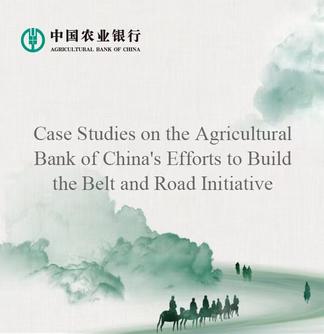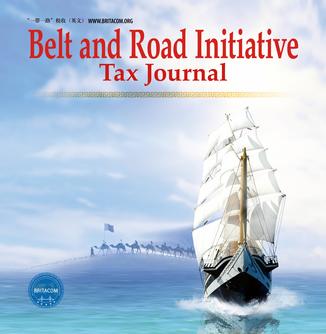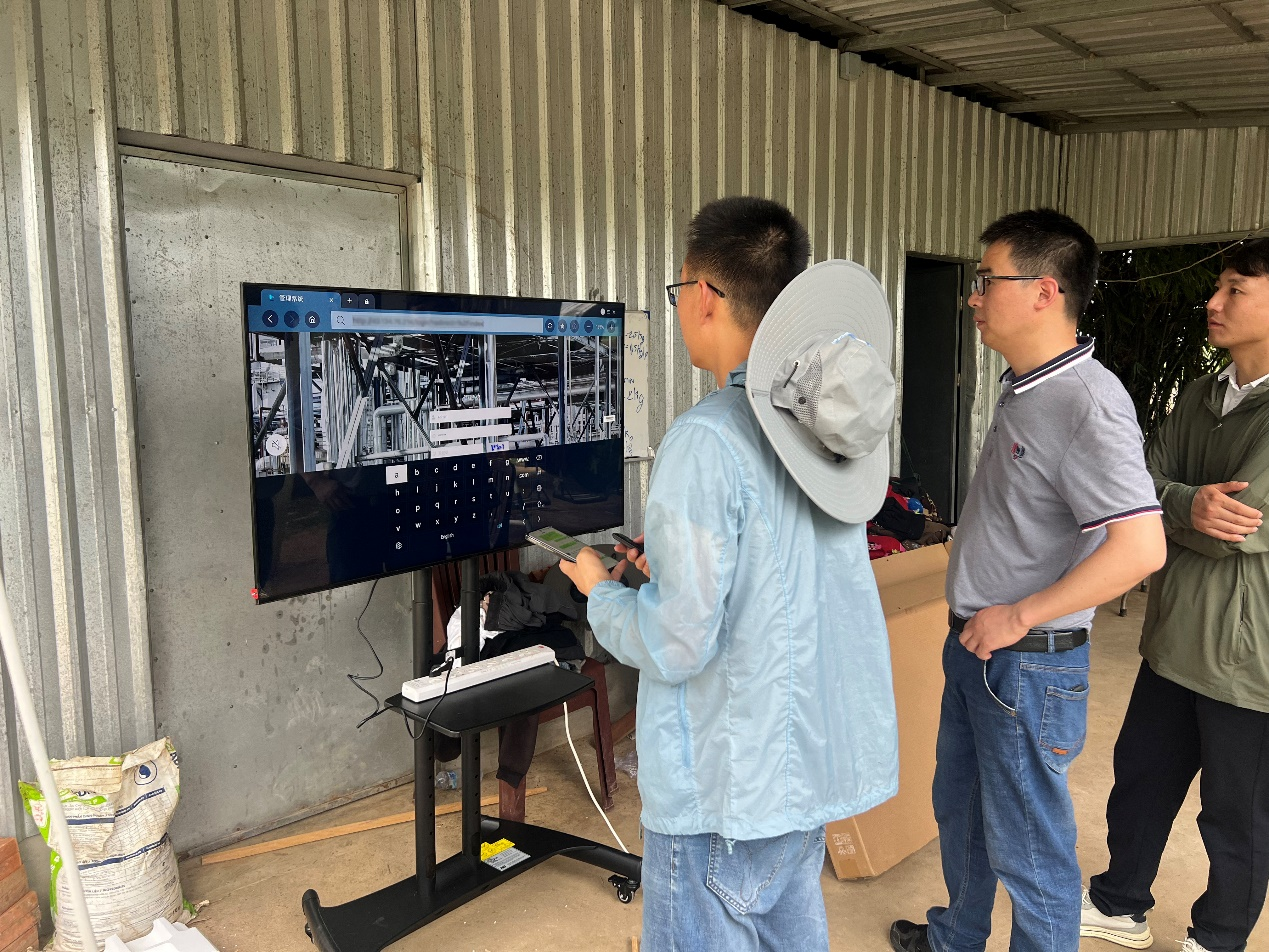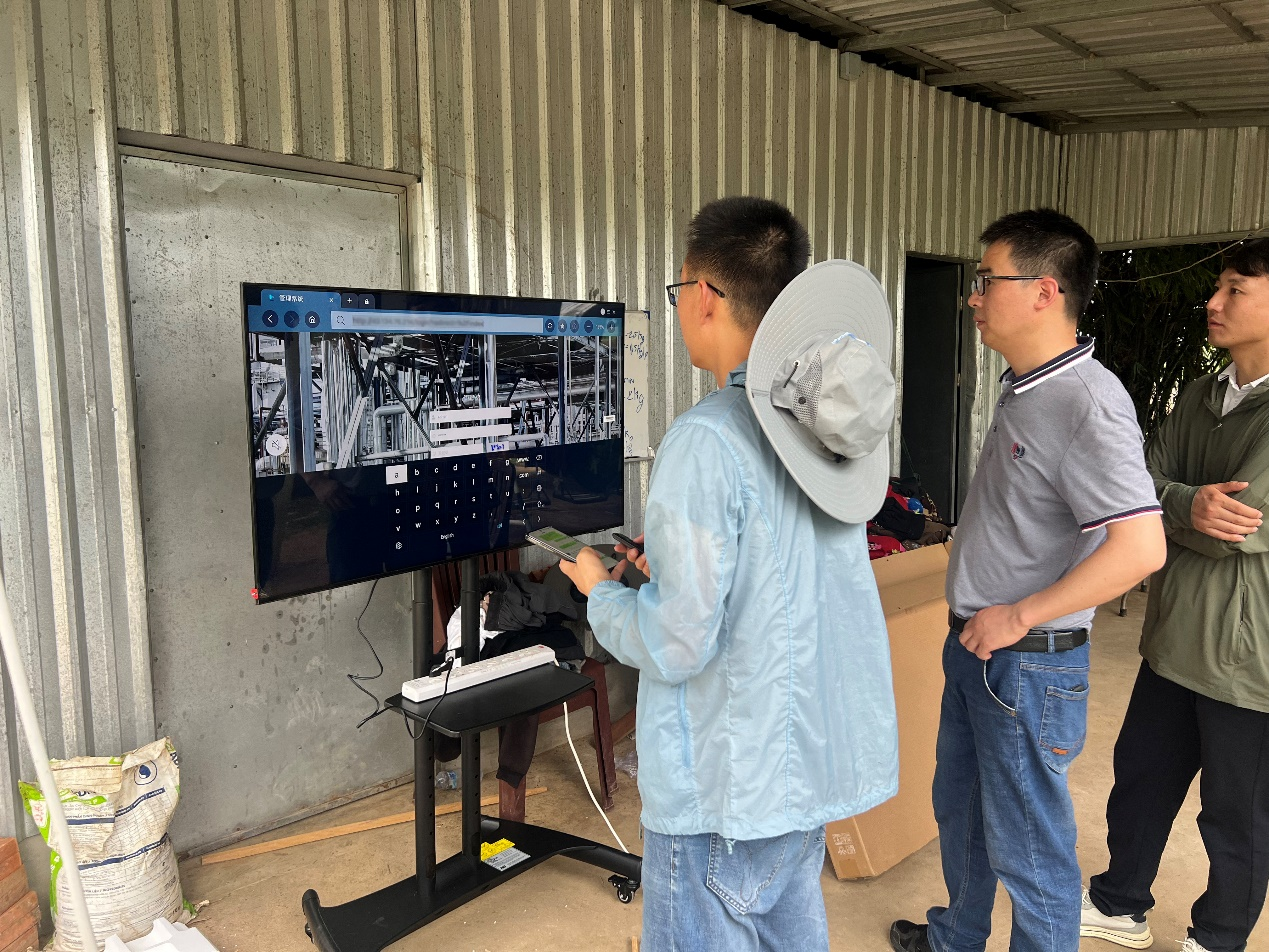

Chinese experts are on-site commissioning the intelligent management visualization large screen. (Photo provided by project party)
Min Chhon is an ordinary farmer in Takeo Province in southern Cambodia. Four years ago, the annual output of the nearly two hectares of rice he planted was only about six tons, and the survival rate of the giant freshwater prawns he raised was less than 30%. After a year of hard work, his income was less than 2,000 U.S. dollars. Now, with the help of the integrated development plan of smart farms implemented by China in Cambodia, Min Chhon has become an "expert" in the village. His pond is often surrounded by farmers who come to learn from him. His income has doubled, and he has moved into a new house. His life has improved significantly.
When talking about his experience of getting rich, Min Chhon pointed to the solar-powered monitoring device by the pond and said, "Chinese experts not only taught us how to raise shrimp but also gave us with feed, shrimp seedlings and technical manuals. Now, we can check the water quality every day by opening the App, see the real-time situation of the pond through the camera, and even use drones for feeding."
From Weather-Dependent Farming to Smart Agricultural Management
In February 2023, China and Cambodia jointly issued the "Joint Statement on Building a China-Cambodia Community with a Shared Future in the New Era", proposing to explore the creation of a "Fish and Rice Corridor" in Cambodia and to carry out digital agriculture cooperation. In December 2023, the China-assisted Agricultural Development Planning Project in Cambodia was officially handed over, which proposed to focus on provinces such as Takeo to build a modern freshwater aquaculture industrial cluster and apply digital technology for precise feeding management and aquaculture environment management.
Against this backdrop, the Foreign Economic Cooperation Center of the Ministry of Agriculture and Rural Affairs (MARA) of China launched the Cambodia Smart Farm Integrated Development Plan in 2024, in collaboration with Shanghai Ocean University, to pilot a digital rice-fish farming model in Takeo Province, promoting the establishment of a cooperation network among the government, research institutions, associations, and farmers in rice-fish farming and its digital development.
The Chinese project team adopted smart devices (such as micro-pore and waterwheel aeration machines, online water quality monitoring equipment and unmanned feeders, etc.) and built a complete digital management system to guide the pilot farmers in Cambodia to remotely control aeration for ponds, monitor water quality parameters online around the clock, and use drones for precise feed delivery. As a result, the survival rate and quality of the large-sized all-male giant freshwater prawns seedlings have been significantly improved, and the labor intensity and farming risks of the farmers have also been greatly reduced.
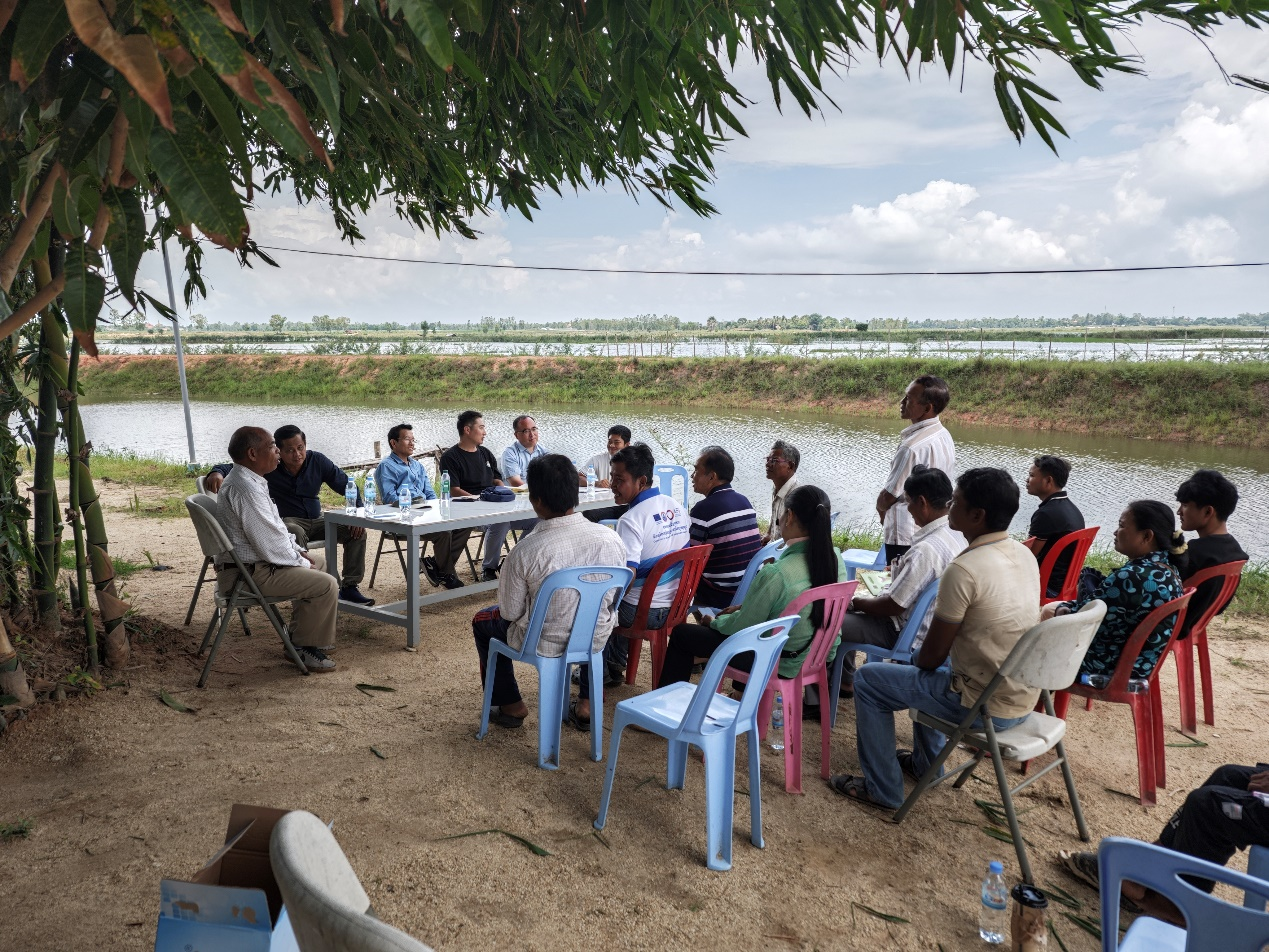

Chinese experts conduct agricultural technology training in Cambodia. (Photo provided by the project party)
Harnessing Intelligent Tech for Agricultural Productivity, Prosperity
The Chinese experts have brought to Cambodian farmers not only equipment but also a complete technical system. Through research on key parameters such as the separate rearing of male and female giant freshwater prawns in rice paddies, stocking density and feeding frequency, they have developed two suitable farming models for tropical regions: "rice-giant freshwater prawns symbiosis" and "rice-giant freshwater prawns rotation".
With the support of the integrated development plan for smart farms, the density of the post-larvae of the giant freshwater prawns in the three pilot households in Takeo Province has doubled compared to before, and the survival rate of the prawns has increased from 40% to 75% - 80%. The survival rate of the prawns in the rice-prawn co-culture model has jumped from 30% to around 70%.
The implementation of the project has brought tangible economic benefits to the local area. The number of rice-fish farming households in Takeo Province has rapidly increased from 4 to 32, with the farming area expanding to 52.8 hectares. The annual income per hectare of land has risen from approximately 1,000 U.S. dollars to over 3,000 U.S. dollars. The increase in income has significantly improved the living conditions of the farmers. They have built new houses, purchased new furniture, and the educational and medical conditions for their children have also been enhanced.
Thay Somony, an official of the Fisheries Department of the Ministry of Agriculture, Forestry and Fisheries of Cambodia, commented: "The ecosystem service analysis, biodiversity conservation, climate adaptation strategies, and digital shrimp care training provided by the project enable farmers to enhance productivity while protecting the ecological environment."
From Technology Transfer to Local Capacity Building
When Cambodian farmers encounter technical problems, Chinese experts can still provide precise guidance in real time through all-weather solar-powered cameras, despite the 2,000-plus kilometers distance.
By the rice fields in Cambodia, drones take off, carrying pellets of feed for giant freshwater prawns, and fly over one pond after another along the planned route, scattering the feed like raindrops into the ponds. This is a scene of the project team in China providing live online guidance to Cambodian rice-prawn farmers on using drones for feeding and breeding of giant freshwater prawns.
While providing hands-on guidance on farming, the project team has also established a multi-level demonstration and promotion network in Cambodia, including a research and development and pilot base, pilot households, and farmers. They offer continuous technical training and support to farmers. Chinese experts are stationed there to provide guidance and organize technical training sessions, with over 300 Cambodian producers, farmers, and students receiving systematic training.
Shanghai Ocean University has also established the "Lancang-Mekong Rice-Fish Special Scholarship", admitting several Cambodian postgraduate students and visiting scholars each year in the rice-fish field to cultivate local professional talents for Cambodia.
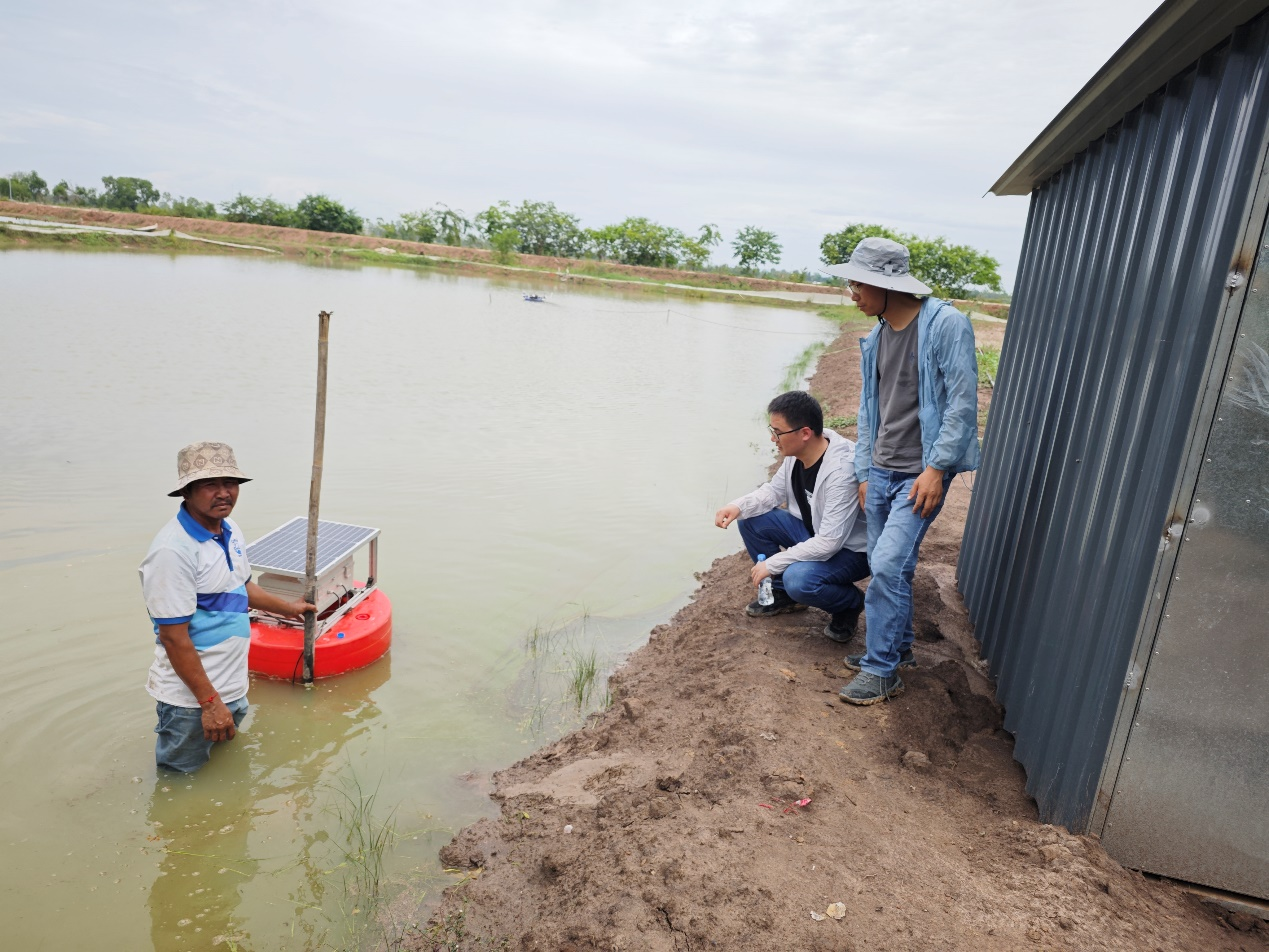

Chinese experts guide Cambodian farmers in using solar-powered water quality monitoring devices. (Photo provided by the project party)
Virakbot and Chhour Aily are both recipients of the rice-fish scholarship from Shanghai Ocean University. "I will become a bridge for rice-fish cooperation between China and Cambodia, bringing the skills and knowledge I have learned in China back to my hometown to help more Cambodian farmers become prosperous through rice-fish farming," Virakbot said.
Chhour Aily participated in the translation of the latest version of the "Rice-Fish Farming Technology Manual", which has been widely used among rice-fish farmers in Takeo Province. "This manual can help Cambodia develop rice-fish farming and improve the lives of its people," she said.
By building a cross-border talent cultivation bridge, a group of local Cambodian experts have emerged. They then pass on their skills to others, forming a self-replicating technology promotion network. Pilot farmer Min Chhon is now teaching apprentices in his village, and digital rice-fish farming technology is spreading like ripples. (By Shao Li)




 A single purchase
A single purchase

